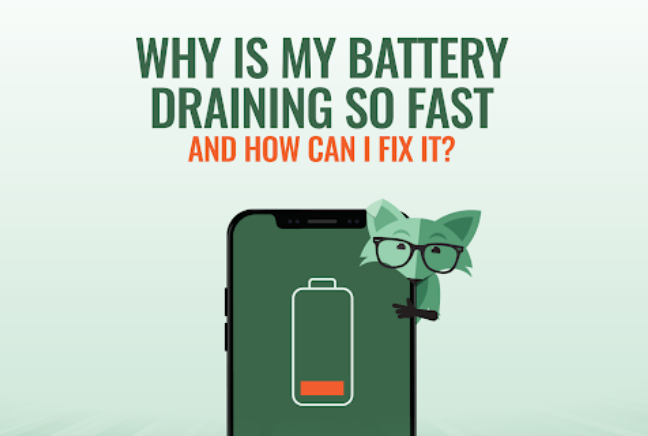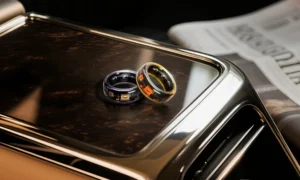Battling a smartphone battery drain issue? You're not alone. Rapid battery depletion is one of the most frustrating problems mobile users face. The good news is that most cases of fast battery drain are caused by easily fixable software settings or user habits. This comprehensive guide provides actionable, data-backed strategies and best practices to help you diagnose the problem and significantly extend your device's battery life.
Key Takeaways: Quick Fixes for Immediate Battery Savings
If you need a quick boost, focus on these top three causes of fast smartphone battery drain:
- Reduce Screen Brightness and Timeout: The screen is the single largest power consumer. Lowering your brightness (or using Adaptive Brightness) and setting your screen to turn off after 30 seconds can offer immediate, significant savings.
- Restrict Background App Activity: Many apps, like social media and mail clients, constantly refresh content, even when you're not using them. Restrict their background access to prevent unnecessary CPU and network usage.
- Enable Dark Mode/Theme: If your phone has an OLED or AMOLED display, using a dark theme turns off individual pixels, dramatically reducing display power consumption and effectively fixing battery drain related to screen usage.
Diagnosing the Root Cause of Smartphone Battery Drain
Before you can fix the problem, you need to understand what's causing the rapid battery depletion. This is your first step to a longer-lasting battery.
1. Identify Power-Hungry Apps and Features
Your phone's settings have a built-in battery usage monitor that is your most powerful diagnostic tool.
Actionable Steps (Android/iOS):
- Go to Settings → Battery → Battery Usage (or similar).
- Review the list to see which apps or system services have consumed the most power since the last charge. Look for apps with unusually high usage relative to the time you spent using them.
- The Insight: If an app you barely opened is at the top, it’s likely running rogue in the background. You should restrict its background activity or consider uninstalling it if it's not essential.
2. Check for Software and App Updates
Outdated software and apps are notorious contributors to smartphone battery drain. Bugs in older versions can lead to inefficient resource management.
Actionable Steps:
- Update OS: Go to Settings → System/General → Software Update to ensure your operating system (OS) is current. New OS versions often include critical battery optimization patches.
- Update Apps: Go to your device's app store (Google Play Store or Apple App Store) and ensure all your applications are updated. Developers frequently release updates to resolve battery drain bugs.
Optimizing System Settings to Combat Battery Drain
Fine-tuning your phone's built-in features is one of the most effective ways to fix smartphone battery drain. These adjustments manage how your phone uses power for connectivity, display, and processes.
1. Master Display Settings for Power Conservation
The display is typically responsible for the largest percentage of battery use.
| Setting | Action to Save Battery | Core Selling Point |
| Screen Brightness | Use Adaptive Brightness (Auto) or manually set it to the lowest comfortable level. | Massive Power Savings: Directly reduces the largest single source of power consumption. |
| Screen Timeout | Set to a short duration (e.g., 30 seconds). | Reduces Idle Drain: Prevents the screen from staying on unnecessarily when you're not interacting with the phone. |
| Dark Theme/Mode | Enable Dark Mode universally on devices with OLED/AMOLED screens. | Pixel Power Efficiency: Black pixels on these screens are completely off, using zero power. |
2. Control Location and Connectivity Services
Services like GPS, Wi-Fi, and Bluetooth constantly search for connections, which causes battery drain.
| Connectivity Feature | Action to Save Battery | Scenario + Functionality |
| Location Services (GPS) | Restrict location access for apps to “Only while using.” Turn off location entirely when not needed (e.g., not navigating). | Scenario: Arriving home after a long trip. Functionality: Turn off GPS when your map app is closed, saving power until your next navigation. |
| Wi-Fi and Bluetooth | Turn them off when you are not actively using them. | Scenario: Traveling on a subway with no service. Functionality: Disabling Bluetooth/Wi-Fi stops your phone from constantly scanning for connections. |
| Mobile Data (5G/4G) | Switch from 5G to 4G in areas with weak 5G signals. | Signal Strength Insight: When the network signal is poor, your phone uses more power to try and maintain a connection, leading to faster battery drain. |
3. Manage Notifications and Vibration
Every notification that lights up your screen or causes a vibration draws power.
Actionable Steps:
- Limit Notifications: Go to App Settings and disable notifications for non-essential apps (e.g., marketing apps, less-used games).
- Turn Off Vibration: Disable keyboard clicks and vibration for notifications/calls. The vibratory motor requires significant power compared to a simple ringtone.
Advanced Battery Health and Maintenance
Beyond settings, a key aspect of how to fix smartphone battery drain involves maintaining the long-term health of your lithium-ion battery.
1. Optimal Charging Practices
Lithium-ion batteries have a limited number of charge cycles. Optimal charging extends their lifespan.
- Avoid Full Cycle Charging: For everyday use, keep your battery charged between 20% and 80%. Regularly draining to 0% or charging to 100% puts unnecessary stress on the battery.
- Manage Heat: Avoid charging your phone while gaming or performing other intensive tasks. Excessive heat is the number one enemy of battery health and can cause permanent capacity degradation, leading to eventual fast battery drain.
- Use Original Chargers: Always use the charger and cable that came with your phone, or certified third-party accessories, to ensure proper voltage and charging protocols.
2. Utilizing Built-in and Third-Party Battery Tools
Modern smartphones offer powerful features to automatically manage power.
| Tool Type | Feature Name (Example) | Core Function |
| OS Feature | Battery Saver / Low Power Mode | Restricts background app activity, visual effects, and network usage to extend life when battery is low. |
| OS Feature | Adaptive Battery | Learns your usage habits and limits battery usage for apps you rarely use, solving latent background battery drain. |
| Third-Party App | AccuBattery (Android) | Monitors battery health, tracks real-time power consumption, and alerts you to unplug at 80% charge. |
| Third-Party App | Greenify (Android) | Puts misbehaving apps into hibernation to prevent them from waking up the system and causing unnecessary drain. |
Recommended Audience & Scenarios
| Recommended For | Scenario Focus |
| Power Users & Gamers | Strategies to manage high-consumption activities (e.g., restricting background sync, checking for overheating). |
| Everyday Commuters | Tips on optimizing connectivity (Wi-Fi vs. Mobile Data) and using Battery Saver mode during long trips. |
| Battery Longevity Enthusiasts | Advanced charging tips (20-80% rule) and utilizing third-party monitoring apps like AccuBattery to track battery health. |
| Users with Older Phones | Focus on diagnosing degraded battery health and aggressively controlling background processes and display settings. |
FAQ: Your Top Questions on Smartphone Battery Drain
Q: Why is my phone battery draining fast even when not in use?
A: This is often due to background apps constantly running (e.g., fetching emails, social media refreshing), persistent location services (GPS), or poor network signal forcing your phone to use more power to stay connected. Check your battery usage settings to identify the culprit and restrict its background activity.
Q: Does keeping my phone fully charged (at 100%) all the time hurt the battery?
A: Yes. Modern lithium-ion batteries are stressed when kept at a 100% charge state, especially at high temperatures. To prolong your battery's lifespan and avoid premature battery drain from capacity degradation, aim to keep the charge between 20% and 80% whenever possible.
Q: Will closing all my recent apps save battery?
A: Not necessarily. Modern operating systems (Android, iOS) are designed to efficiently manage RAM. Constantly closing and relaunching apps uses more power than allowing the OS to keep them in a low-power, “cached” state. Focus instead on restricting background data/refresh for specific apps that show up as high-drainers in your battery usage report.
| Common Cause | Quick Fix | Data Point/Why It Works |
| Bright Screen | Lower brightness / Enable Dark Mode. | The screen is often >40% of total battery consumption. |
| Background Apps | Restrict background activity (Sleeping/Deep Sleeping Apps). | Prevents constant CPU usage and data sync while phone is idle. |
| Heat | Don't charge while gaming; keep out of direct sun. | High temperatures can permanently degrade battery capacity. |








